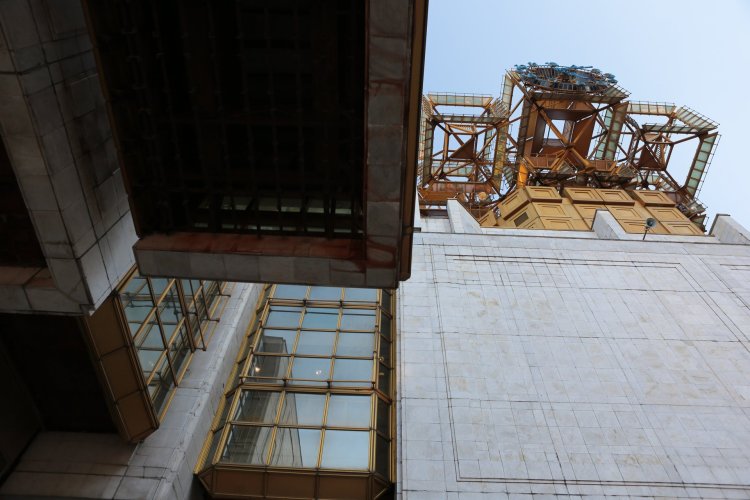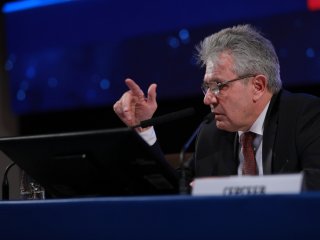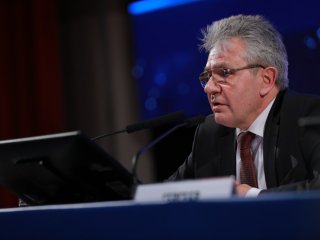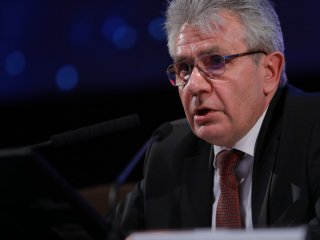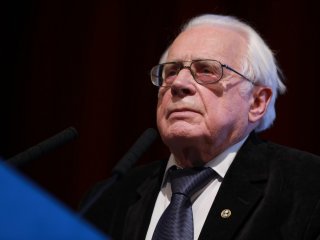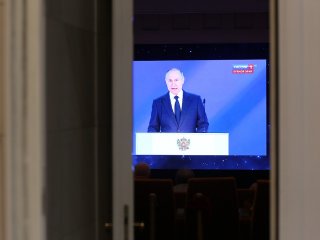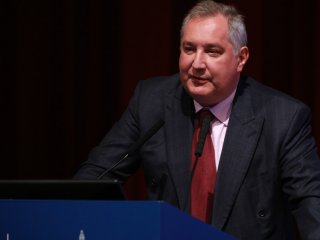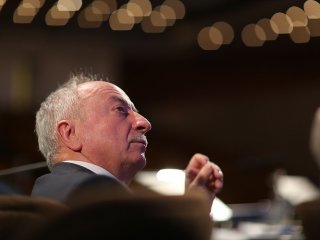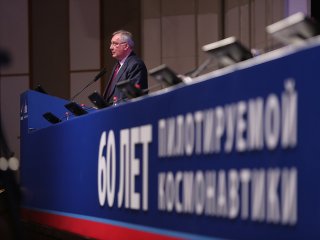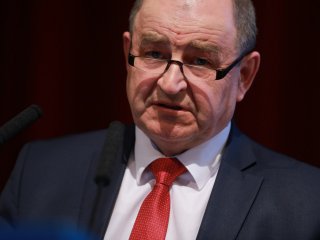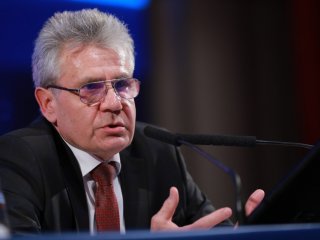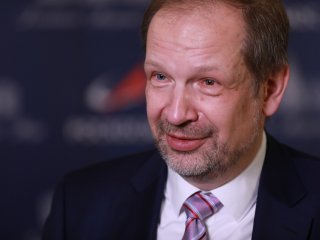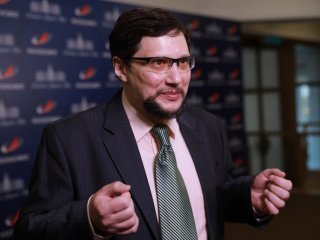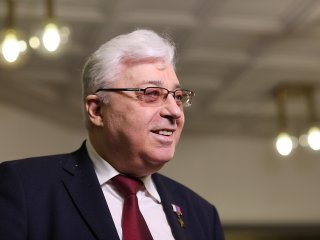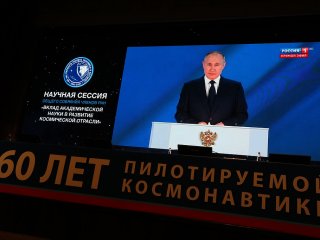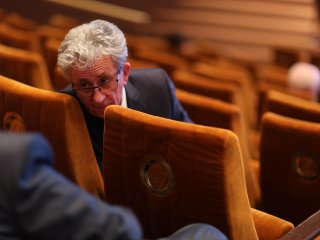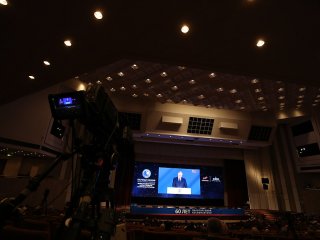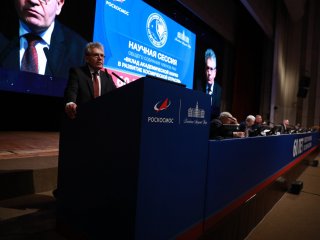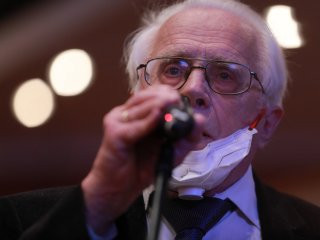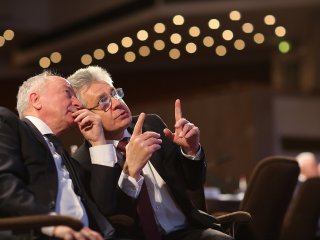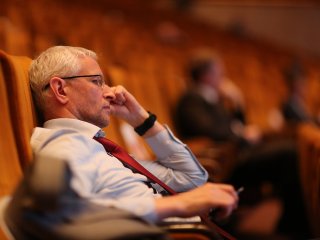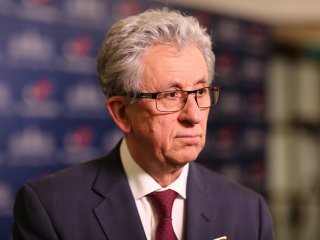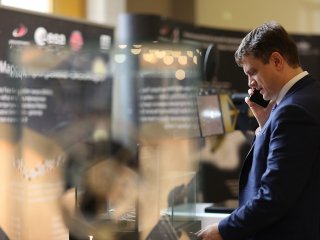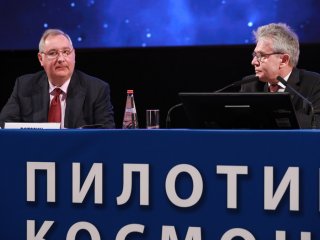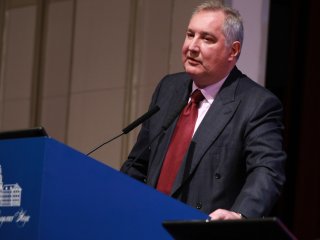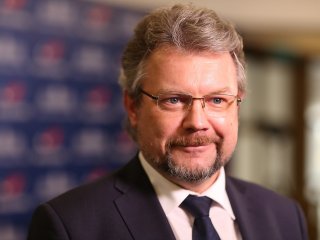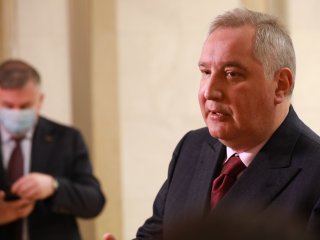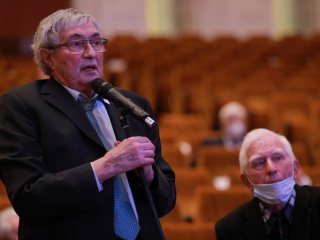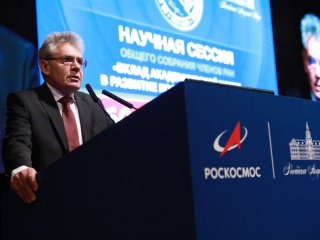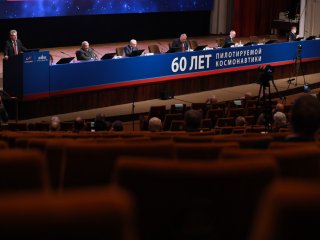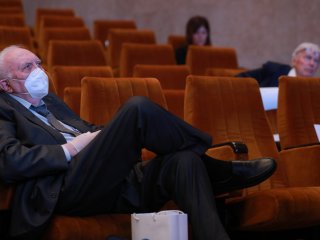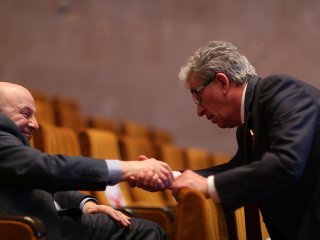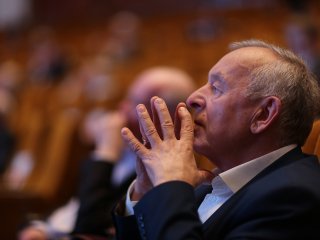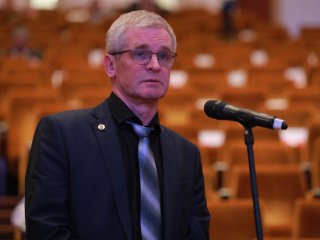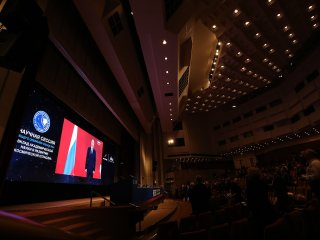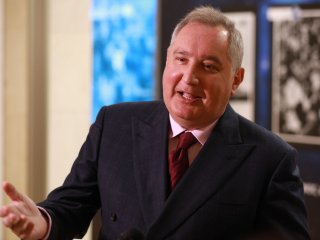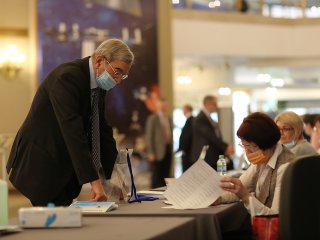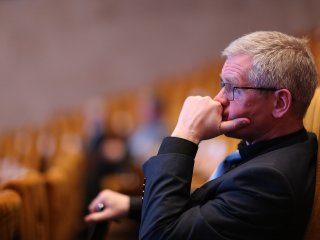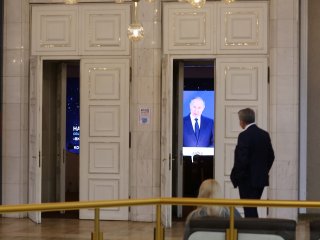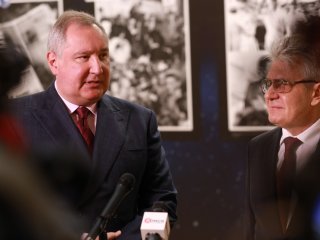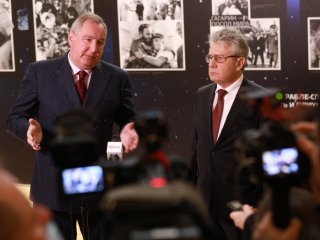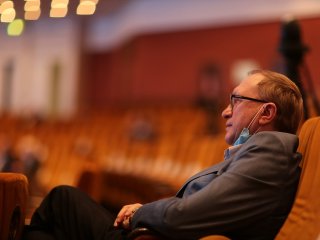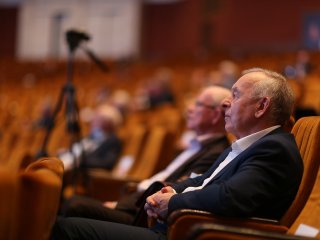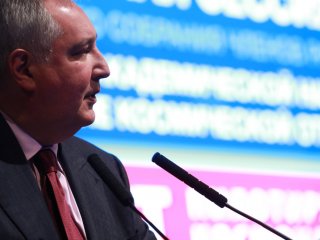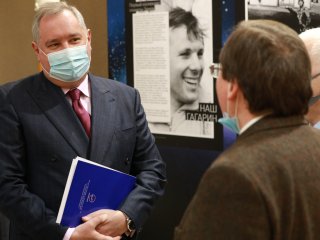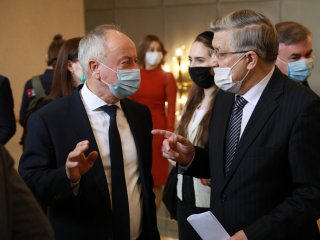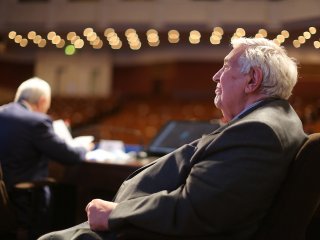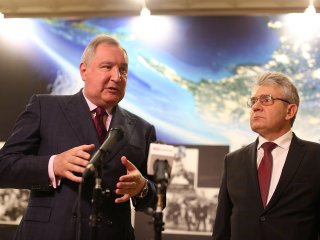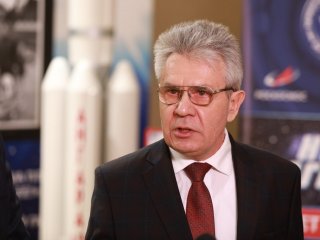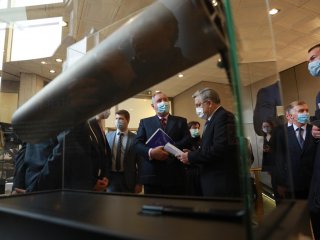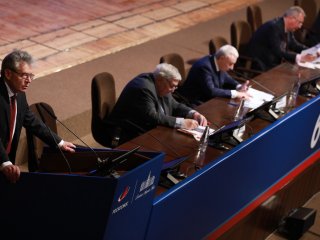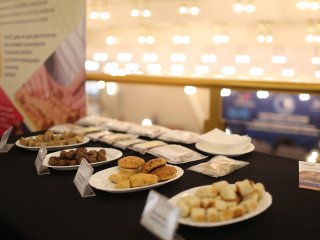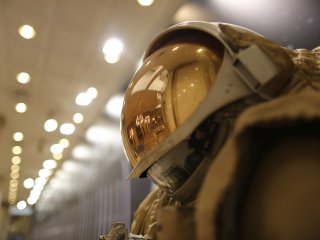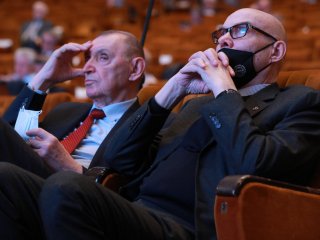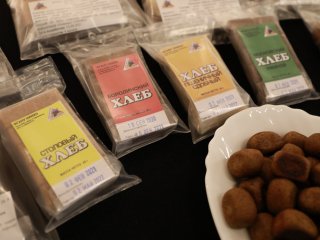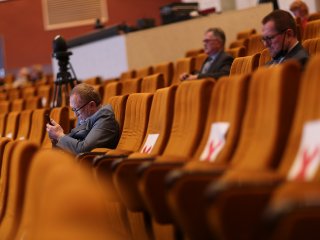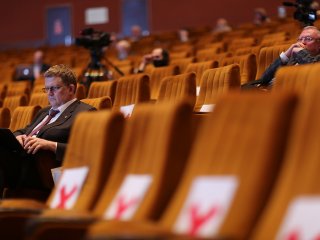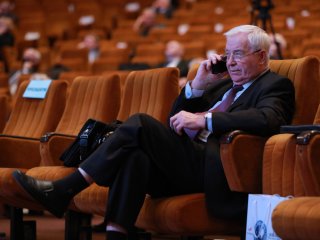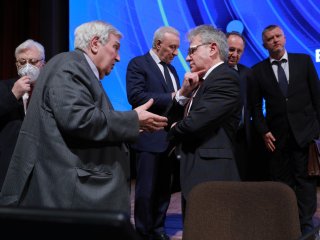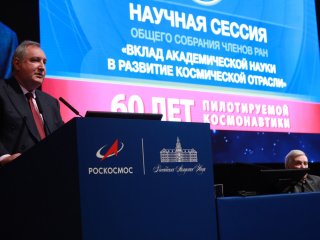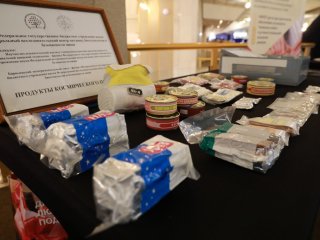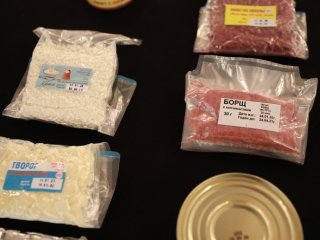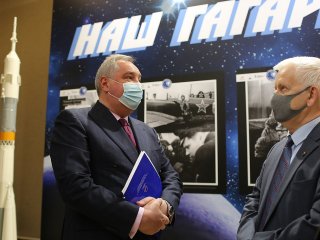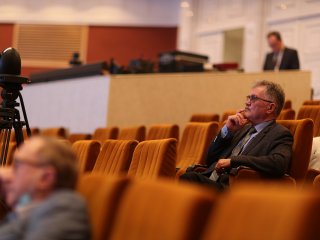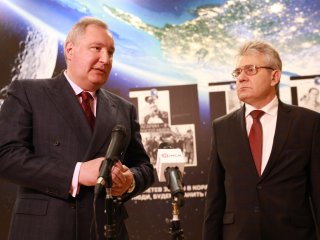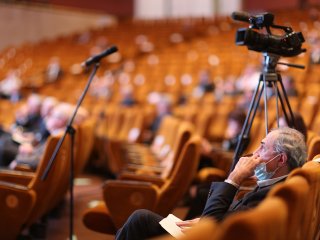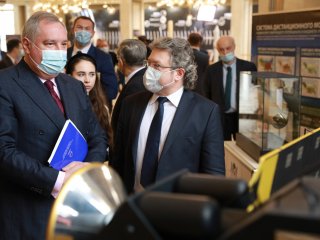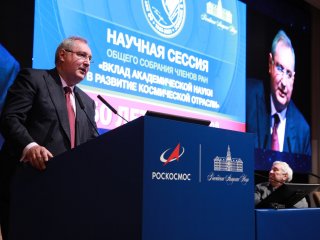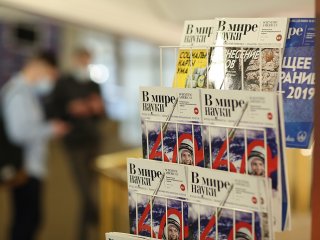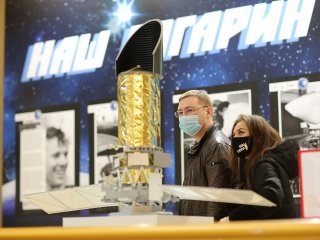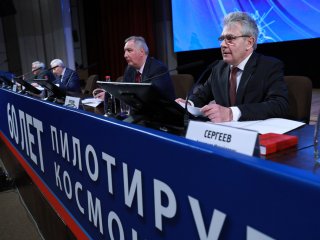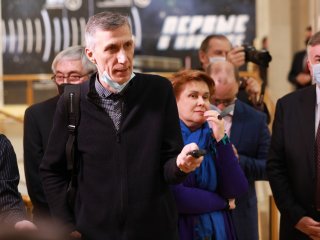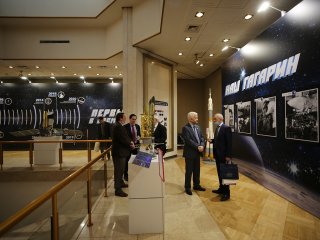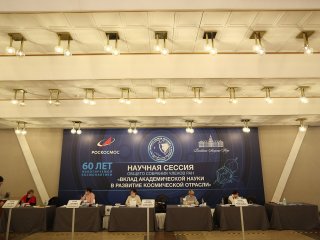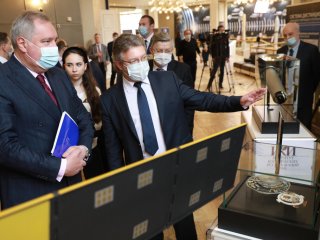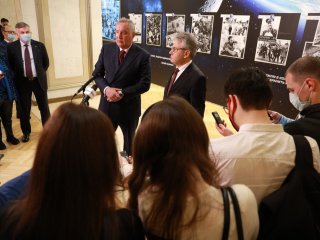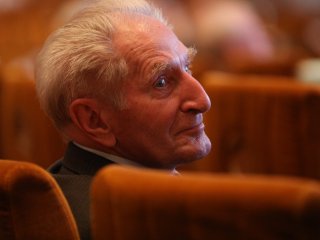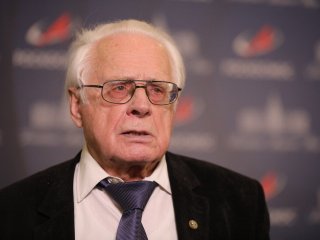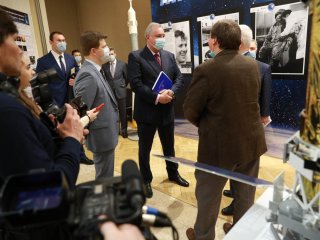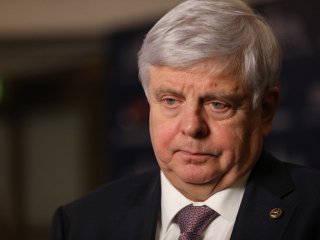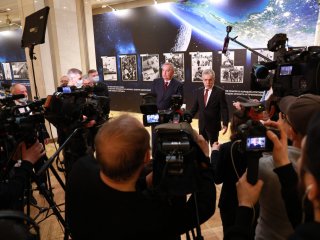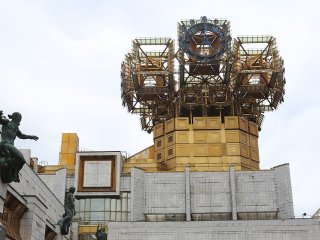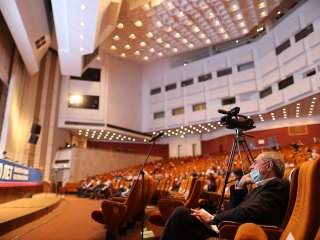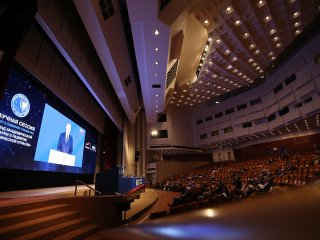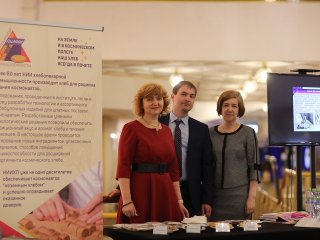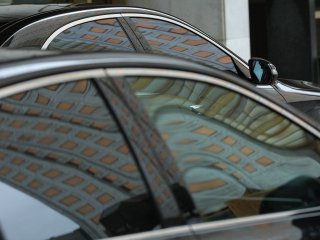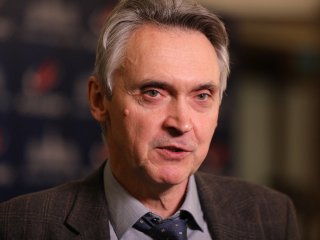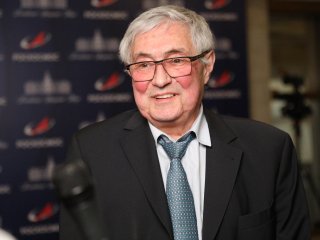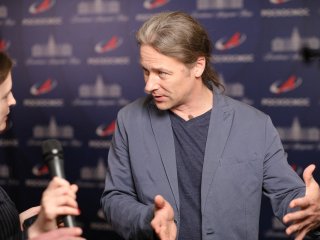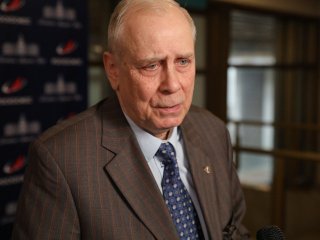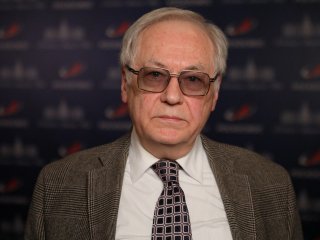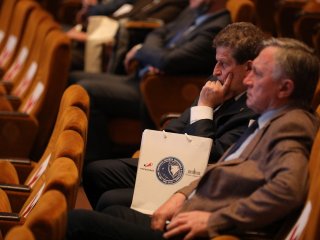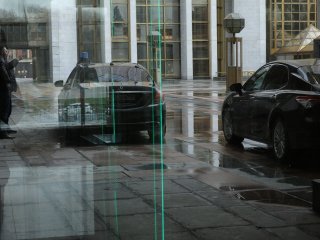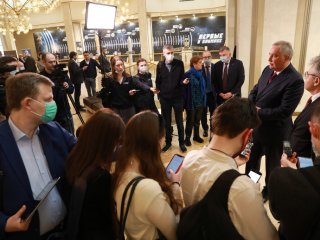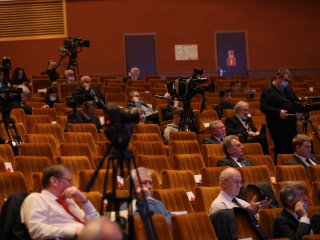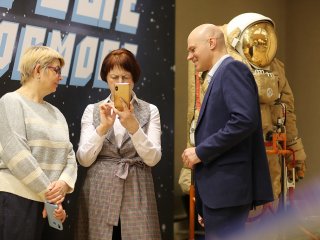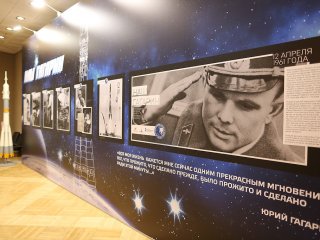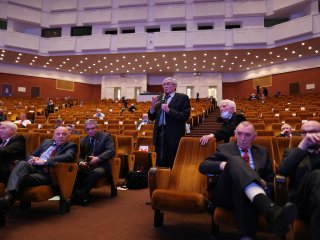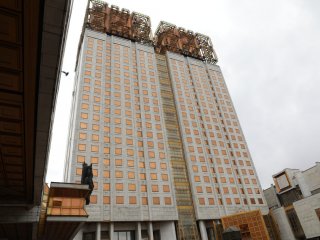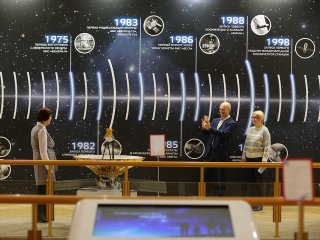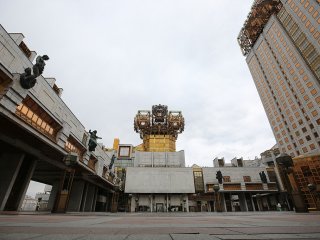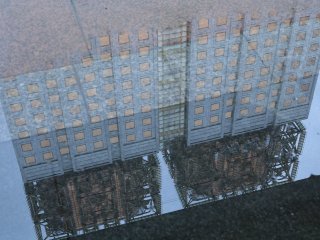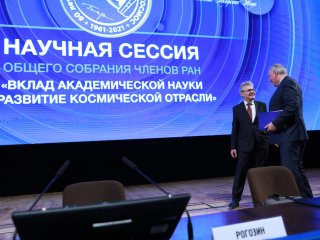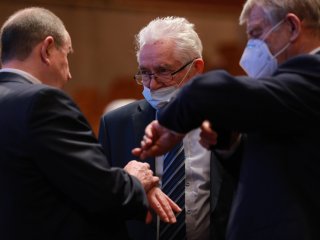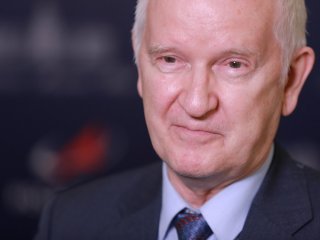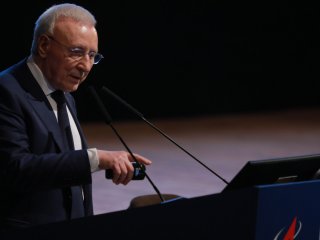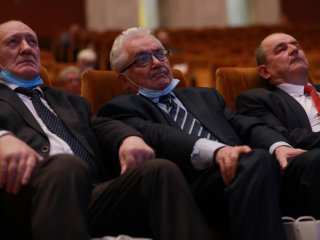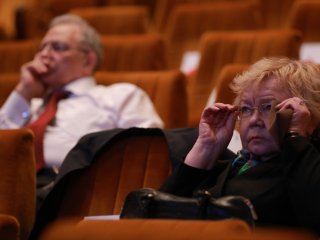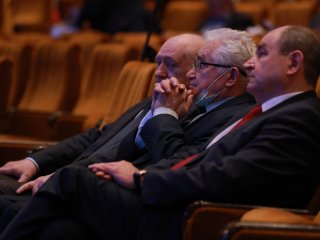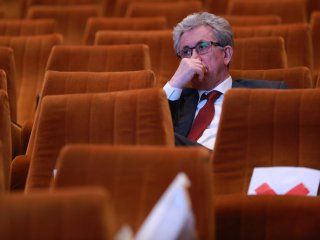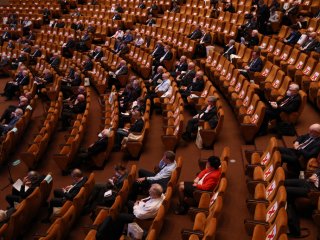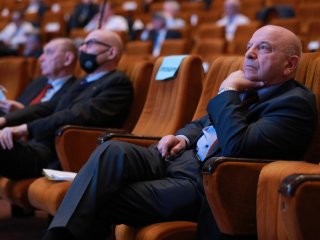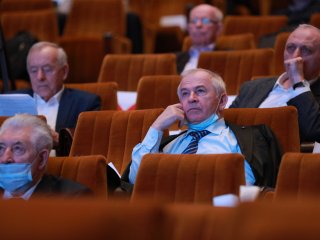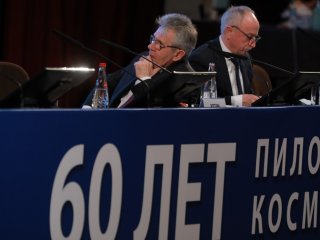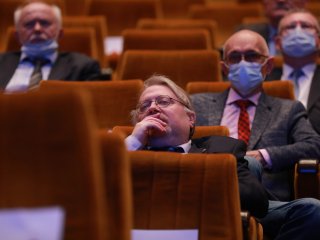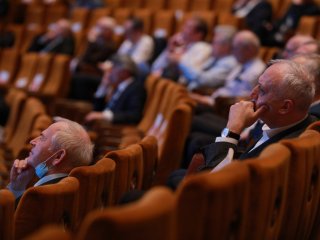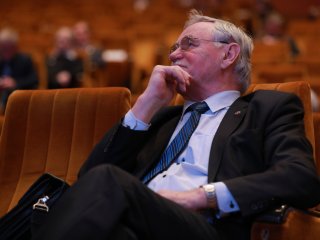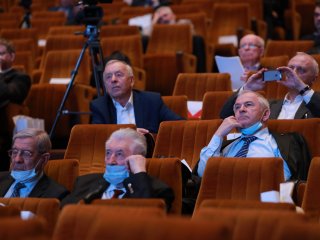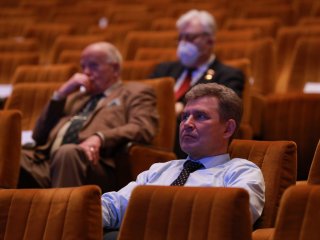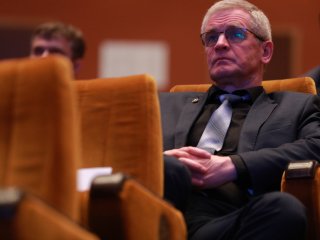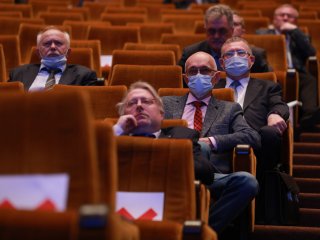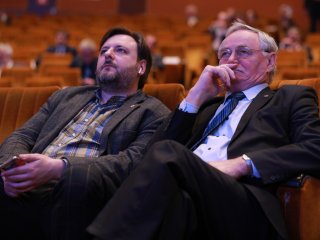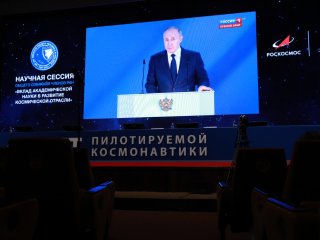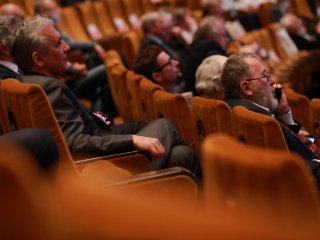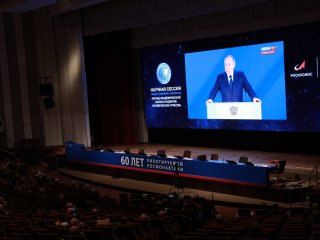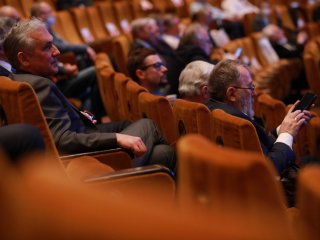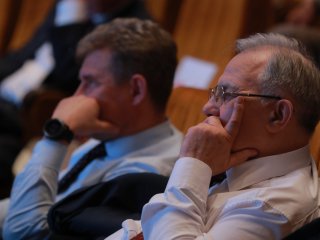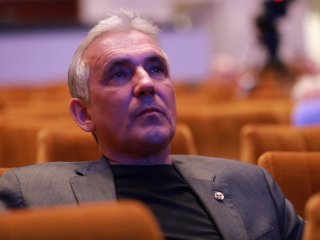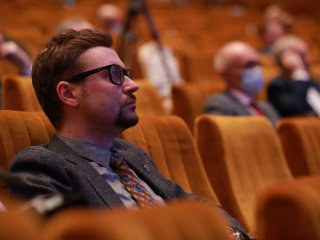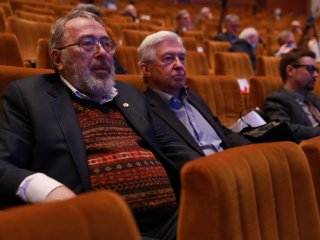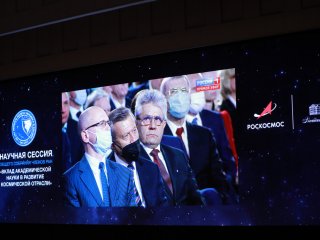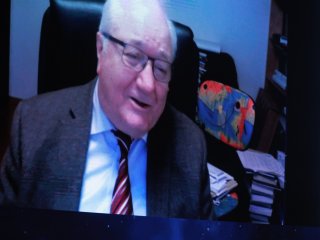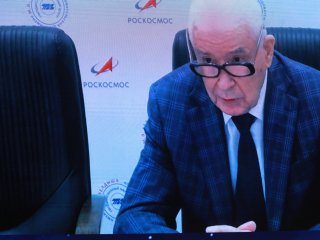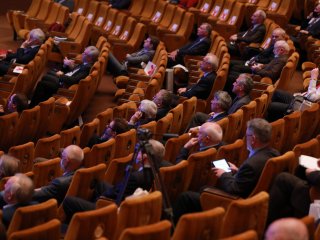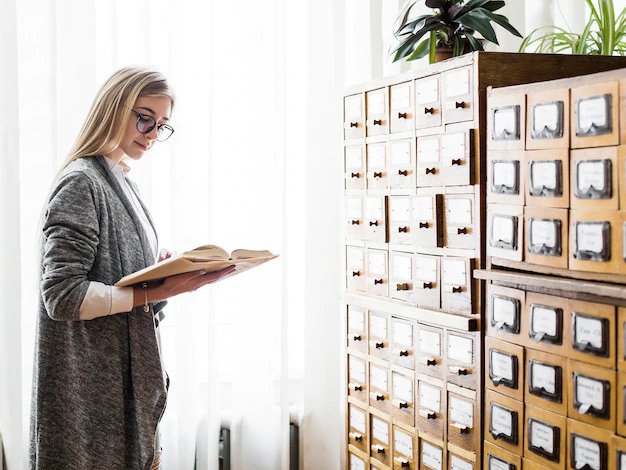On April 20 and 21, 2021, the Russian Academy of Sciences has been holding a General Meeting of its members. The main topic is the 60th anniversary of Yuri Gagarin’s spaceflight: “Contribution of Academic Science to the Development of Space Industry.”
The scientific session is dedicated to the contribution of academic science to the development of the space industry. The following presentations are on the agenda:
- Science for Space and Space for Science. A. M. Sergeev, President of RAS.
- Russia’s Space Strategy. D. O. Rogozin, CEO, Roscosmos State Corporation.
- Role of Russian Academy of Sciences in the Development of Cosmonautics. M. V. Keldysh, S. P. Korolev. M. Ya. Marov, RAS Academician.
- Academy of Sciences and Space. Historical Aspects. RAS Corresponding Member Yu. M. Baturin.
- Manned Spacelight: Achievements and Prospects. RAS Corresponding Member V. A. Solovyov.
- Scientific Foundations, Achievements, Priorities and Current Challenges of Space Medicine. RAS Academicians O. I. Orlov, A. I. Grigoryev, V. M. Baranov.
- Russian Innovations in Medical Support of Spaceflight. RAS Corresponding Member O. Yu. Atkov.
- Surveys of Earth from Space. RAS Academician V. G. Bondur, chief designer of automatic space vehicles V. V. Khartov.
- Using Nuclear Energy in Space Systems. RAS Academician A. S. Koroteyev.
- Advancements of High-Energy Astrophysics and the Spektr-RG Russian-German Project. RAS Academician R. A. Syunyayev.
- Using Automatic Space Vehicles to Survey the moon – A Prelude to Manned Lunar Exploration. RAS Academician L. M. Zelyony, CEO of S. A. Lavochkin Research and Production Association V.A. Kalmykov, First Deputy CEO of S. A. Lavochkin Research and Production Association A. Ye. Shirshakov, Space Geodetics.
- Communications and Navigation. History of Development, Current State and Outlook. CEO of JSC Roskartografiya, General Designer of GLONASS system S. N. Karutin, RAS Corresponding Member N. A. Testoyedov.
Scientific Russia is hosting its traditional live broadcast at its the portal and the SCIENTIFIC.RUS YouTube channel. Be sure to join us!
09.40. Participants of the meeting are welcomed by the Alexander Sergeev, President of RAS.
09:44. “We all know, and some of us have lived to remember the day of the great triumph – the flight of man into space. Feats like that, when the nation demonstrates its leadership, certainly rank among the most significant events,” Sergeev says about the main topic of the meeting.
09:47. “We are making every effort to ensure continued development of the Federal Space Program,” the President of the Academy of Sciences emphasizes.
09:50. New challenges of scientific space research require advanced solutions in the field of technology and aerospace engineering.
09:53. “Cooperation between countries on space matters is the key to maintaining a peaceful environment.”
09:55. Dmitry Rogozin, head of the Roscosmos State Corporation, speaks.
09:57. Space research also seeks to improve the quality of life of people. Space technology drives communication, the development of navigation systems, etc.
09:59. “Our third task is dedicated to scientific space research. This is the direction that faces some challenges, including budget cuts. Both the president of the Russian Academy of Sciences and I approached the President of the country with this problem,” Rogozin notes.
10:02. It is important that fundamental space research is continued into the future for 10 years or more.
10:05. “There is no need to get involved in ‘competitions’ where we are ranked second or third a priori. We have to develop in areas where we will become pioneers,” the head of Roscosmos said confidently.
10:08. Space programs need to be developed in alignment with actual needs of the government and science.
10:10. Dmitry Rogozin suggests focusing on such areas as “space for people.” “Only space communications can unite a country.”
10:12. “We ask the Academy of Sciences to take part not only in shaping the appearance of the new station, but also in the experimentation international program.”
10:16. The head of Roscosmos speaks about manned spaceflight and the possibility of long-range flights.
10:20. “We cooperate actively with the Institute of Space Research and the Institute of Biomedical Problems of the Russian Academy of Sciences. I propose to strengthen this nexus and work on the shared site being set up today.”
10:22. Dmitry Rogozin recalls the successes of the Spektr-RG vehicle.
10:25. Participants in the general meeting are welcomed by Soyuz MS-18 crew members Oleg Novitsky and Pyotr Dubrov.
10:26. “Scientists were able to study the conditions of outer space. There were many discoveries in related areas. And cosmonautics was the main accelerator of this process,” says cosmonaut Oleg Novitsky.
10:29. Vice President Yuri Balega takes rostrum.
10:33. The President of the Russian Academy of Sciences recalls that the Presidential address to the Federal Assembly is scheduled at 12:00. The President's speech will be broadcast during the general meeting of the Russian Academy of Sciences.
10:34. RAS Academician Marov delivers his speech, The Role of Russian Academy of Sciences in the Development of Cosmonautics. M. V. Keldysh, S. P. Korolev.
10:36. “In the anniversary year of Yuri Gagarin’s flight, we recall with the deepest respect and gratitude our outstanding contemporaries, the founders of practical cosmonautics and rightful leaders of space research, Korolev and Keldysh.”
10:38. In 1946, Mstislav Keldysh headed NII-1, the former rocketry institute where the Katyusha rockets had been designed. A significant part of developments was embodied in Burya, a nuclear-armed intercontinental supersonic missile.
10:41. The launch of the world’s first Soviet artificial satellite on October 4, 1957, is a landmark event in the history of human civilization. “We ourselves did not immediately realize in full the importance of what had happened,” Academician Mikhail Marov quotes Keldysh.
10:44. Gagarin’s flight catalyzed the development of manned spaceflight, paving the way for future single and group flights.
10:46. Mikhail Marov recalls the early space equipment of the Soviet lunar program.
10:47. “Korolev and Keldysh were enthusiastic to study the Solar System and they made a huge contribution to the exploration of the Moon and planets. The first attempts at a soft landing on the Moon, the first flights to Venus and Mars were accompanied by numerous failures, but this was an inevitable period in the development of cosmonautics, which Korolev called the ‘Age of Learning’.”
10:49. The Soviets made up for the setback in the “moon race” with the first soft landing on the Moon, the development and launch of Lunokhod vehicles along with mooncraft for automatic collection of lunar rock samples and their delivery to Earth.
10:52. “Academicians Keldysh and Korolev, the progenitors of cosmonautics, shaped its development for many decades. Their untimely deaths dealt a serious blow to our cosmonautics. They left the most lasting footprint not only as outstanding scientists and leaders of expert teams whose authority was unquestionable, but also as outstanding individuals with the highest civic responsibility, civil courage,” says Marov.
10:55. “The remarkable traditions laid down by President of the USSR Academy of Sciences Keldysh, and his leading role in the development of cosmonautics, is what the Russian Academy of Sciences is seeking to preserve in the new conditions,” the speaker sums up.
10:58. Keldysh and Korolev believed that space flights would become one of the greatest aspirations of our civilization.
11:00. Yuri Baturin speaks.
11:01. In March 1934, the world’s first All-Union Conference on the Study of the Stratosphere was held in Leningrad.
11:02. At a session of the Academy of Sciences, the topic of reliability was discussed.
11:04. Since 1940s, the VR-190 project was developed – the first Soviet project for launching a man on a rocket into a suborbital spaceflight on a ballistic trajectory.
11:08. The Soviet satellite development project was started in parallel.
11:09. “In 1956, the USSR Academy of Sciences was recognized as the leading scientific organization for space research,” recalls Baturin.
11:10. Nevertheless, there was no single point of view concerning the criteria and methods for estimating the reliability of rocket and spacecraft complexes.
11:12. Baturin recalls that no mathematical theory of risk existed during early days of the space industry.
11:15. So it was proposed to bring a redundant set of trajectory measurement equipment out of “deep standby” as a means of improving reliability.
11:18. RAS Corresponding Member Yuri Baturin points to ideas proposed for spacecraft braking.
11:21. Gagarin wrote in a letter shortly before his flight: “I believe in the equipment. It will not fail. But it happens that sometimes a man stumbles on an even spot and breaks his neck as he falls. So, something may happen here too.”
11:25. RAS Corresponding Member Vladimir Solovyov talks about the outlook of manned cosmonautics.
11:27. The first module of the Russian segment of the ISS was launched into orbit in 1998 while it was designed for a 15 years’ life. Yet, the Russian segment has actually been operating for 22 years at the ISS.
11:28. “About 80% of the equipment in vehicle utility systems is beyond end-of-life,” Solovyov’s presentation notes.
11:30. “We all have a better understanding of the complex conditions of outer space.” Therefore, future equipment must be as stable as possible.
11:33. New tasks facing the orbital station include ensuring maximum observation capabilities throughout the territory of the Russian Federation, including high-latitude areas of the Earth. “There is a need to begin manned research in the areas of Earth least protected from space radiation."
11:37. Solovyov showcases a new manned transport ship, PTK. Its purpose is to deliver crews and payloads to Moon and Earth orbits, as well as taking them back.
11:44. The lunar base will be used to test technology ensuring safe human stay on the Moon. Studies of lunar resources will provide opportunities for replenishing mission-critical consumables: oxygen, water and others.
11:47. “Due to its geographical position, Russia is preordained to be a space power,” Solovyov summed up hid speech.
11:49. Yuri Balega goes on to organizational issues.
11:51. The General Meeting of the Russian Academy of Sciences will resume its work at 13:20 after the President Vladimir Putin’s address.
13:26. RAS Academician Oleg Igorevich Orlov takes the microphone with his report on the scientific foundations, achievements, priorities and current challenges of space medicine.
13:30. On international significance of Yuri Gagarin’s flight to outer space. This event caused great enthusiasm of scientists around the world and led them to consolidate their efforts
13:33. First space flights were quite safe for cosmonauts’ health. However, those who have completed a number of long spaceflights, had to be carried on hands, and not only in a figurative sense. This was one of the reasons why the RAS Institute of Biomedical Problems was established in our country. An entire scientific school has emerged, focused on studying the impact of spaceflight on human health.
13:36. The speaker talks about space gastroenterology.
13:38. Our crew support system has been recognized worldwide.
13:41. “In his address to the Russian Federal Assembly V. V. Putin spoke about telemedicine. Russian scientists have done a lot of work in this area in recent years. Telemedicine proved especially relevant in the conditions of the COVID-19 pandemic,” says the speaker.
13:43. “We have to reinvent medical support for autonomous spaceflight”
13:48. The issue of using the ISS as a kind of simulator for practicing future interplanetary spaceflight is being discussed widely.
13:50. RAS Corresponding Member Oleg Yuryevich Atkov takes the microphone to report on high-priority innovations of national relevance.
13:52. The speaker cites several examples of innovative equipment and devices for physiological condition monitoring developed by a number of design offices under medical and biological support from the Russian Academy of Sciences. Among other innovations, the medical unit of the Salyut-7 orbital station can be named as an example of such equipment.
13:55. About “knowledge gaps” in space physiology and medicine. “Today we have the ability to ensure a safe human flight into space for up to a year and a half.”
13:57. The Center of Extreme Conditions Medicine will be established this year.
13:58. Academician V. G. Bondur takes the microphone to report on surveys of Earth from the space.
14:01. The speaker talks about the utility of space activities for such applications as navigational systems, remote Earth sensing, etc. and especially in the military, as troops today receive 90% of all information from space.
14:05. About remote Earth sensing methods and the mass extinction of aquatic biota in Kamchatka in 2020.
14:12. The “red tide” is not an isolated phenomenon and is characteristic not only of our country, but of the whole world.
14:14. On studies of emissions of harmful gases and aerosols into the Earth’s atmosphere.
14:17. As far as natural disasters are concerned, fires and floods are the two main troubles besetting our country. Next, turning to the problem of predicting fires.
14:25. Soon we will use data from space as easily as today we use mobile phones, the scientist believes.
14:27. RAS Academician A. S. Koroteyev talks about the possibilities of using nuclear energy in space systems.
14:30. The speaker talks about the history of the development of nuclear space energy.
14:34. He mentions safety principles.
14:35. In the aftermath of the Chernobyl disaster, work on nuclear engines and nuclear powerplant had been virtually frozen for many years. The “nuclear hibernation” ended in 2009.
14:44. On the results of the first stage of the Kaplya-2 space experiment.
14:48. RAS Academician R. A. Syunyayev talks about the work of the Spektr-RG (SRG) orbital observatory. The third scan of the sky is currently underway. The craft is currently located at the Lagrange point L2.
14:51. The scientist talks about two telescopes, the Russian ART-XC and the German eROSITA, both operating aboard SRG. In one day, the telescope scans a strip about one degree wide. Telescopes work properly and are operating in their normal mode.
14:59. Russian scientists from the RAS Institute of Space Research are responsible for one half of the sky, and German specialists, for the other. Spektr-RG has already been able to detect a million X-ray sources.
15:06. On the recording of stars with exoplanets.
15:08. Rashid Syunyaev spoke about the largest and most interesting quasars that were discovered during the Spektr-RG mission.
15:10. SRG telescopes record one good candidate for tidal destruction of a star with a supermassive black hole once every 10 days. Telescopes in Russia, Hawaii, and San Diego immediately join their observations.
15:14. About the unique spectroscopy that scientists have.
15:15. Academician L. M. Zelyony delivers a presentation on the exploration of the Moon and planets using automatic space equipment. “Paradoxically, there is still no consensus on how exactly the Moon was formed,” says the academician. The scientist recalls the outstanding works of E. M. Galimov.
15:20. About Tsiolkovsky’s triad: from a dream to an idea and its embodiment, as well as how the Lunar race first began in the world. The first soft landing on the Moon was made by the Soviet craft Luna-9.
15:23. On lunar rock delivery projects.
15:26. “Space and science remain a road for diplomacy even in the most difficult of times.”
15:28. On water ice reserves in the polar regions of the Moon. The presence of this form of ice makes the Earth’s satellite an even more attractive object for studies.
15:35. Lev Zelyony talks about the promising future project Luna-27 undertaken together with European colleagues. The Luna-28 project is also being discussed. The craft is expected to make a lunar landing and a lunar return using a robotic system (popularly known as Marfa) that will simulate human work.
15:38. The United States has already announced its desire to return to the Moon. How Russia will respond to this is still unknown.
15:39. Dust can be named the main hindrance for lunar operations: sharp sickle-shaped nanosized particles which can kill a person easily if they enter lungs. The problem has not yet been solved.
15:43. “Space can become our national idea!” summed up Lev Zelyony.
15:45. RAS Corresponding Member N. A. Testoyedov takes the microphone with a presentation on space geodetics, communications and navigation.
15:49. The speaker talks about photo converters developed by Zh. I. Alferov.
15:53. About improving the quality of space equipment. For example, satellites have become 40 times more reliable. Then he proceeds to address the development of the GLONASS system.
15:59. About the creation of large antennas for space with an umbrella reflector up to 40 meters in diameter.
16:00. Under an order of the Russian Academy of Sciences, work will begin on designing a unique high-precision antenna made of composite materials for the Millimetron space observatory.
16:07. The discussion section begins. Secretary Academician of the RAS Social Sciences Department A. V. Smirnov speaks. “Space is a bond of national self-consciousness, an object of consolidation,” said the philosopher. But it is necessary to tell apart the circuit of private goods, the circuit of public goods and the circuit of formation of public goods.
16:12. A. G. Degermendzhy has the microphone with a message concerning an experimental closed-loop life support system. He proceeds to expound on the theory of such systems and their development.
16:18. In connection with the anniversary of the first human flight into space, 6 members of the Russian Academy of Sciences were awarded the Tsiolkovsky Badge of Merit (Roscosmos Group of Companies), 4 members of RAS were awarded Korolev Badges, and 21 members of RAS were awarded with diplomas.
16:20. RAS Corresponding Member B. V. Gusev delivers his presentation on engineering directions in the space industry.
16:23 B. V. Gusev talks about cooperation between the Russian Academy of Sciences and RIA on addressing technical issues (under an Agreement on Cooperation between RAS and RIA)
16:26 On key pursuits of the Russian Academy of Engineering: “Of course, diverse environmental problems are a highly relevant direction currently that really needs an accelerated pace of development. The issues we are trying to address may still be isolated, but nevertheless they are of great importance for shaping the development waste-related industries…”
16:29 RAS Academician Valery Rubakov spoke in connection with a force majeure circumstance according to the Kommersant. Povolzhye publishing house and the detention of a RAS Academician.
16:34 RAS President invites V. G. Bondur to speak. He offers a draft resolution. Valery Grigorievich noted several points: “Our scientific session is unusual as it is connected with the 60th anniversary of the beginning of manned spaceflight. The contribution of the Academy of Sciences is significant in this matter. What happened and what preceded it gave a powerful impetus to the development of many areas of pure science: mathematics, computer science, physics, chemistry, materials sciences, Earth sciences, biology, mechanics, control systems theory and others. New directions arose in science…”
16:40 Alexander Mikhailovich Sergeev makes several additions. First of all, he was curious why no mention was made of international cooperation in space: “In my opinion, this definitely has to be included. We said that international cooperation in space is the key to our peaceful life. This opinion was voiced in several speeches. I believe we must make this addition, especially since this is the academic meeting resolution.”
16:44 L. M. Zelyony also joins the discussion. He speaks of the need to create a supradepartmental structure in the form of the Space Council under the President of the Russian Federation, as this issue was discussed earlier.
16:47 Alexander Mikhailovich comments: “I don’t see this suggestion as ‘iconoclastic’ in any way. I believe that this can be done in a politically correct language, especially because this does not contradict the opinion of the head of the State Corporation [Roscosmos].”
16:49 A proposal is voiced by a representative of the Union of Cinematographers of Russia.
16:53 Question about the funding of scientific space research comes from RAS Academician Mikhail Yakovlevich Marov.
16:54 “I believe a point concerning funding of scientific space studies would be apt… As to what we can submit to the Government and what we cannot, there is a procedure for submission…,” says the President of RAS.
17:00 Alexander Mikhailovich Sergeev: “Yesterday we all heard quite a discomforting fact that only 10% of the country can name a renowned scientist living today. This percentage being so low is our fault too, and we need to work with the information sphere.”
17:02 RAS President concludes the General Meeting.
The broadcast is over. Thank you for joining us!
Photo: Olga Merzlyakova, Nikolay Mokhnachev, Nikolay Malakhin, Andrey Luft / Scientific Russia
